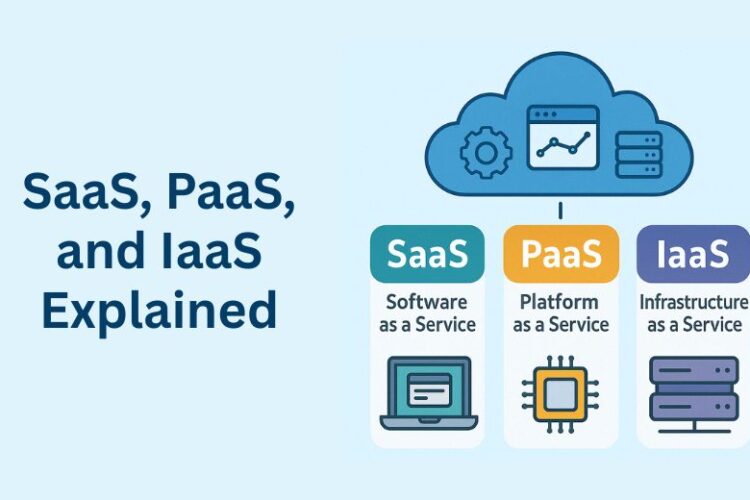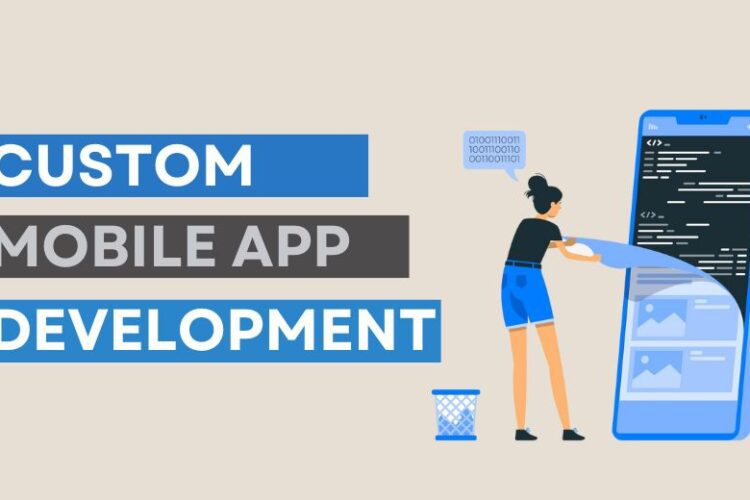A well-defined content marketing strategy is important for any business. With an articulated strategy, every content piece created by your company will support your business goals and the needs of your audience while extending the visibility of your brand through channels. Otherwise, without a strategy, the efforts related to content can be uncoordinated, less effective, and result in lost resources and missed opportunities. The point of content marketing services is not to sell any merchandise but to create value to gain trust and authority.
Table of Contents
- Know Your Audience
- Setting Clear Goals and Objectives
- Content Audit
- Creating a Content Strategy
- Creation and Optimization of Content
- Distribution and Promotion
- Measuring and Analyzing Performance
- Keeping Your Content Fresh: Maintenance and Updates
- Future Trends in Content Marketing
Know Your Audience
Any effective content marketing strategy starts with the understanding of who one is addressing. This becomes quite crucial in understanding who your audience is, what they care about, and how they consume information for translation of your messaging and delivery to maximum effect.
Identifying Target Audiences
- Target audience group that you want to reach. You’ll build an extremely specific profile of your ideal audience by defining age, sex, location, income level, education, and occupation.
- You are creating content that should resonate with the audience; for this, you need to know the needs and preferences of your audience.
- Tools like Google Analytics, social media insights, and customer surveys may possess rich data about audience behavior.
- This gives you a fair idea of the subjects they may be interested in, their interests, what problems they face, or what they may be trying to resolve. That then helps you create content that provides real value to the viewers/readers.
Setting Clear Goals and Objectives

One of the most important activities that take place in content marketing services includes setting clear objectives and goals. They usually entail brand awareness, lead generation, driving traffic to your website, engagement, and ensuring customer loyalty.
SMART Goal: What Is It?
- SMART goals are those specific targets that are clearly stated, measurable, achievable, relevant, and time-bound that provide clear direction and benchmarks of success.
- Setting SMART goals lets you make a direct statement of your objective and the timeframe within which it has to be realized; therefore, it’s easy to track the progress made toward the realization of success.
Align Content Goals with Business Objectives
- It makes sure that your content objectives align with the company’s business objectives, hence driving towards the success of the company.
- This alignment entails the need to realize the mission, vision, and strategic priorities of the company, and then develop content goals that support such objectives.
Content Audit
- A content audit is a review of all content assets created by a business.
- An audit of content will give you an idea about what works with your audience, what needs updating or repurposing, and what gaps there are that still need creation.
- You’ll be informed with knowledge of the quality and effectiveness of existing content to enable you to decide what to create next and what action to take to start getting your content marketing strategy aligned with your goals.
Identifying Gaps and Opportunities for Content
- It is, therefore, critical to identify content gaps and opportunities that may optimize your content marketing strategy
- Content gaps are representative of areas where valuable content does not exist to answer the needs or interests of your audience.
- You can know these gaps and opportunities by conducting keyword research, analyzing competitors’ content, and listening to customer feedback.
Benchmarking Against Competitors
- Benchmarking against competitors involves analyzing the content strategies of your main competitors, with the view to learning about their strengths and weaknesses.
- It also allows one to identify industry trends, realistic performance targets, and where one can make a differentiation for his or her brand.
- By understanding how your content stacks up against competitors, you may make strategic adjustments that could be necessary for improvement in positioning, enhancing value proposition, and competitive advantage.
Creating a Content Strategy

- Content strategy development involves the specification of the various ways your business will make use of content to achieve its marketing objectives.
- It is a strategy that denotes the type of content developed, the topics that shall be covered, and the channels to be used for distribution.
- A well-developed content strategy outlays clear actions for content creation; it ensures every one of these is made to meet business objectives as well as audience needs.
Choosing Content Types and Formats
Content formats and types should be carefully selected to ensure audience engagement and achieve marketing objectives.
- Content types vary and include blog posts, videos, infographics, eBooks, and podcasts. Each usually appeals to a different target audience preference or need.
- What format you will use depends on several variables including but not limited to the message you are trying to relay, what platform you are using, and resource availability.
Creating a Content Calendar
- A content calendar is a plan for the development, publishing, and promotion schedule of content.
- Creating a content calendar involves noting what content is to be published at what time on which platforms.
- A content calendar lays out what your content strategy is, thus making coordination of efforts and management of resources easier, while progress becomes traceable.
- This not only keeps you organized and helps in meeting deadlines but also keeps your audience engaged with regular high-quality content.
Balancing Quality and Quantity
- One of the big challenges with content marketing services has to do with how to balance quality and quantity. While one needs to generate enough content to keep themselves visible and relevant, the quality should not be compromised whatsoever.
- Quality content is informative yet interesting, offering some sort of value to your audience that builds trust and authority.
- On the other side, too much content production could result in burnout and lower quality.
- Finding the right balance means realistic content goals, focusing one’s attention on topics that resonate with one’s audience, and upholding quality standards.
Creation and Optimization of Content
- Content creation and optimization are an essential foundation for a successful content marketing strategy
- Good research, great stories, and comprehensive information about the needs of the audience build great content. Optimization means ensuring your content is findable as well as engaging. The need for discoverability calls for optimization.
SEO and Keyword Strategy
- SEO and Keyword Strategies are necessary to ensure that your content can be discovered by search engines and reach your audience.
- SEO best practices include optimization of meta tags, alt text for images, and making sure that your content is mobile-friendly.
- A good keyword strategy will attract organic traffic and help with search engine ranking.
- Focus on SEO, and watch your visibility of content, count of visitors, and engagement rate grow.
How to Optimize Content to Engage Audiences and Encourage Sharing
- Any content created to elicit more engagement and sharing should find a chord with your audience and create responses from them.
- Easily shareable content resonates, which makes it relatable and informative, hence easy to be shared across various social media sites.
- All these can be addressed by optimizing your content to achieve better engagement and shareability, which apart from creating an off-the-rail fire for spreading, gets attention and increases your word-of-mouth marketing can easily proliferate your brand’s reach and influence.
Distribution and Promotion
- Distribution and promotion determine the level of reach and effectiveness one will have with his content. The selection of channels includes social media, email, blogs, and third-party sites for distribution.
- Promotion may take the forms of paid advertising, influencer/author partnerships, and content syndication. Using various distribution channels provides one with an opportunity for expanded audience traffic to one’s content.
- Promotion will ensure that your content does not just sit there, but it actively reaches out and hits your target audience. A well-implemented distribution and promotion plan enhances visibility, amplifies engagement, and increases the effectiveness of your marketing efforts.
Measuring and Performance Analysis

- It is very important to measure and analyze performance regarding what works and what doesn’t in the execution of your marketing.
- It includes website traffic, engagement rates, lead generation, and conversion rates among others. Google Analytics, social media insights, and CRM system tools provide valuable information on content performance.
- By consistently revisiting and analyzing this information, you’ll be able to make informed decisions toward the optimization of your content strategy in improving results. Effective measurement and analysis allow you to show stakeholders the value of marketing and make continuous improvements to it.
Key Metrics and Analytics Tools
- Key metrics to measure content performance include page views, time on page, bounce rate, social shares, comments, lead conversion rates, and return on investment.
- Analytics tools, such as Google Analytics, HubSpot, and social media dashboards will let you track these metrics to gain deeper insights into audience behavior. Tracking Content Performance and ROI
Monitors Performance of Content and ROI
- Tracking the performance of your content by return on investment monitors how effective your content marketing services are.
- Monitoring the ROI allows an understanding of the financial impact of the marketing efforts and thus justifies the investment.
Adjust Strategy Based on Data Insights
- Adjusting your content marketing strategy based on data insights is key to continuous improvement.
- It involves analysis of performance metrics and feedback to understand what works and what doesn’t, thus making necessary adjustments.
- By routinely looking at the data, one will make strategic adjustments to retain agility and ensure a response to the changing audience needs for better results over time.
Keeping Your Content Fresh: Maintenance and Updates
- Keep your content fresh, updated, accurate, and of value to the audience.
- It also involves repurposing high-performing content in various formats to give it greater reach and impact.
- By maintaining freshness in your content, you care about your promise of value and your ability to stay current with the trends in the industry.
- Regular maintenance of content helps in yielding better search engine ranking, improves user experience, and sustains audience trust.
Keeping Content Relevant and Current
- It is about maintaining relevance and freshness in the content for the continuity of audience engagement and their trust.
- First, regular review and updating of the content keep it fresh, useful, and relevant in the face of constant changes.
- The more current the content will be, the more credibility it will create, the greater the user experience will be, and the more long-lasting it will make the engagement and loyalty of the target audience.
Feedback Addressing and Iterative Improvements
- With the ability to address feedback and iterative improvements, one could develop a better strategy for content marketing services.
- Customer and stakeholder feedback and performance data provide a wealth of insight into what works and what doesn’t work.
- Gather feedback and, day by day, make small amendments to develop the quality, relevance, and effectiveness of your content.
Future Trends in Content Marketing
- Future trends in marketing show new technologies, formats, and audience behavior that will shape the future of marketing.
- Being attuned to these trends will help you always stay ahead and alter your strategy with variations in market conditions.
- These include, but are not limited to, the development of video content, personalization, AI/artificial intelligence and Automation, and sustainability.
- New formats and technologies: New formats and technologies are going to revolutionize how businesses connect with their audience.
- Predictions on the evolution of marketing mainly enable one to fathom how changes are going to take place in future years regarding marketing. Being at the advantage of being informed and one step ahead enables one to make good use of the arising opportunities and challenges that would come up for the continuity of the marketing efforts at their best.
- Preparing for Changes in Audience Behavior: Indeed, one must prepare for any kind of change in the behavior of audiences to make sure that your content marketing strategy is always relevant and effective. Responsiveness toward changes in the behavior of audiences continues to cater to meeting their needs and interests, driving desired outcomes.
Conclusion
Sustainable marketing strategies will have to be holistic and adaptive. It involves knowing who your audience is, establishing clear objectives, creating valuable content, and measuring and optimizing performance continuously. A sustainable strategy would thus be one that could stay focussed on long-term success, build trust and relationships with your audience, and provide value continuously. You can develop an innovative content marketing strategy to drive ongoing engagement in business growth for long-term success by being abreast of industry trends and responsive to feedback with the help of a digital marketing agency in Delhi.




